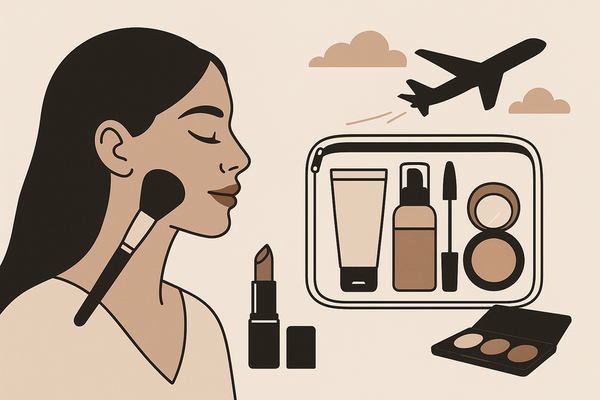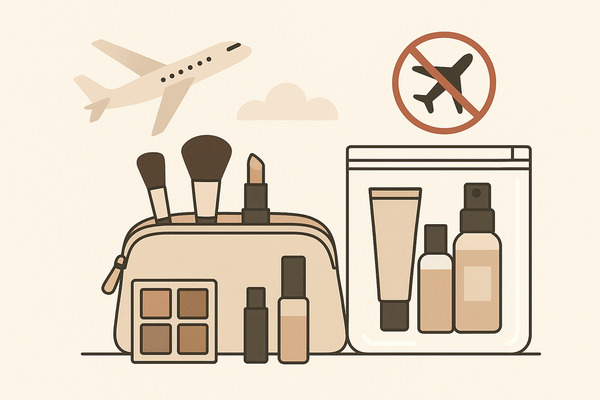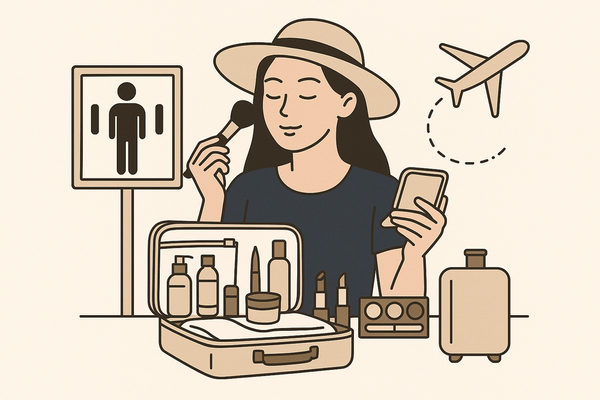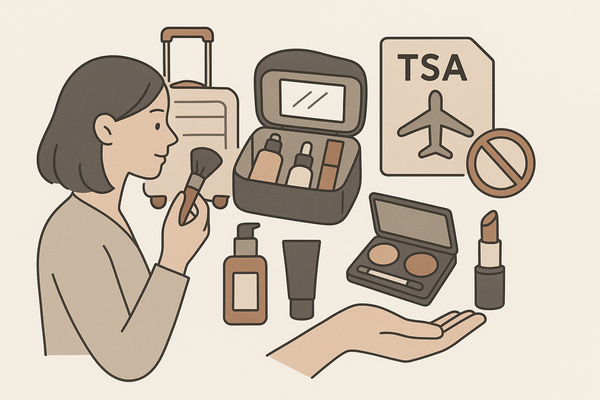How to Clean Makeup Brushes: A Complete Guide to Hygiene and Maintenance
Learn how to clean makeup brushes with DIY recipes, disinfection methods, and storage tips to keep your tools hygienic and long-lasting.
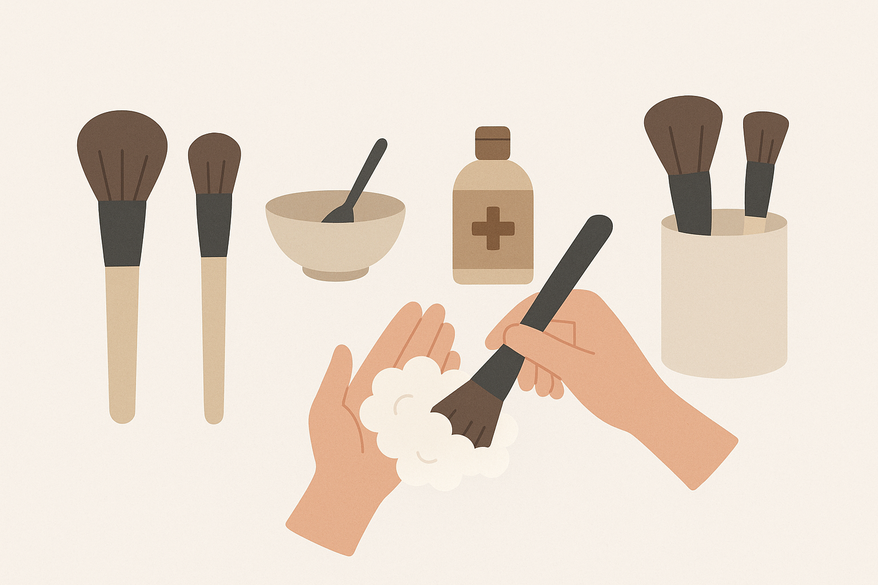
Estimated reading time: 8 minutes
Key Takeaways
- Regular cleaning prevents breakouts and extends brush life.
- Follow our step-by-step method for deep-cleaning your brushes.
- Explore DIY brush cleaner recipes using household items.
- Learn the optimal sponge washing schedule and drying tips.
- Master proper disinfection methods and storage best practices.
Table of Contents
- Understanding the Importance of Regular Cleaning
- Detailed Guide – How to Clean Makeup Brushes
- Brush Cleaner DIY
- How Often to Wash Sponges
- How to Disinfect Beauty Tools
- How to Store Brushes Properly
- Conclusion
- FAQ
Understanding the Importance of Regular Cleaning
Defining Key Terms
- Bacteria buildup: accumulation of microbes (E. coli, staph) on makeup tools that can transfer to skin.
- Skin hygiene: daily practices that prevent infections, breakouts, and irritation.
Risks of Unclean Tools
Unwashed brushes and sponges become breeding grounds for bacteria, oil, and dead skin cells—leading to:
- Acne and breakouts
- Skin irritation and redness
- Infections (folliculitis, staph)
- Clogged pores and uneven makeup finish
“Unwashed brushes breed bacteria, dirt, and oils leading to infections, acne, irritation.” – American Academy of Dermatology
“Dirty brushes can cause severe skin conditions and clogged pores.” – Nanshy
For more on essential hygiene tips for healthy skin.
Preserving Brush Quality
- Keeps bristles soft and flexible
- Prevents shedding and bristle breakage
- Extends brush lifespan and performance
Detailed Guide – How to Clean Makeup Brushes
Tools & Products Needed
- Lukewarm water (32–38 °C). Avoid hot water to protect ferrule glue.
- Gentle, fragrance-free shampoo or pH-neutral brush cleanser.
- 100% cotton towel for blotting.
- Optional silicone brush-cleaning mat for deeper agitation.
Step-by-Step Instructions
- Rinse bristles under lukewarm running water. Tilt brush downward to avoid water soaking handle.
- Dispense a dime-size amount of cleanser into your palm or cleaning mat.
- Gently swirl bristles in cleanser, working from base to tip until the dirt lifts.
- Rinse under running water until water runs clear.
- Squeeze out excess moisture with a clean towel.
- Reshape bristles, lay brushes flat with bristles over the edge of a counter for optimal air circulation.
Tip: For dense or angled brushes, repeat lather and rinse until all pigment is gone.
Source for drying technique.
Best Practices & Common Mistakes
- Do not soak handles or ferrules—they can loosen glue bonds and cause shedding.
- Never dry brushes upright; water can seep into the ferrule and compromise the structure.
- Avoid harsh detergents or alcohol on natural-fiber brushes; they strip oils and make bristles brittle.
- Clean brushes at least once a week; more often for products used around the eyes or lips.
Source: American Academy of Dermatology routine.
Brush Cleaner DIY
Homemade cleaners save money, cut chemicals, and reduce waste.
Recipe 1: Olive Oil & Dish Soap
- Mix 2 parts gentle dish soap + 1 part extra-virgin olive oil in a small bowl.
- Swirl the brush to blend. Soap removes makeup; oil conditions natural bristles.
Recipe 2: Baby Shampoo Mix
- Dilute 1 teaspoon baby shampoo with 2 tablespoons water.
- This pH-balanced solution cleans gently without drying out bristles.
Recipe 3: Vinegar Disinfecting Solution
- Combine 1 part white vinegar + 2 parts water.
- Soak bristles for 1–2 minutes. Rinse thoroughly to eliminate vinegar smell.
Pros & Cons
DIY:
– Pros: Affordable, customizable, eco-friendly.
– Cons: Extra rinsing needed, odor removal steps.
Commercial:
– Pros: Fast-drying, pre-measured, effective disinfection.
– Cons: More expensive, may contain fragrances or harsh chemicals.
How Often to Wash Sponges
Makeup sponges are porous and trap moisture, creating ideal conditions for bacterial growth.
Washing Frequency
- After Every Use: Quick daily rinse under lukewarm water + mild soap.
- Weekly Deep Clean: Fully submerge sponge in cleanser solution for 5–10 minutes, then rinse until water runs clear.
Sponges absorb more product and moisture—cleaning sponges is more critical than cleaning brushes. Quick daily rinses reduce surface oils; weekly cleans remove deeper grime.
Drying & Replacement:
– Gently squeeze out water without twisting to avoid tears.
– Lay sponges on a clean towel in a well-ventilated spot; avoid closed, humid spaces.
– Replace sponges every 3 months or sooner if you notice cracks, tears, or mold.
See also the applicator debate.
How to Disinfect Beauty Tools
Method A: Isopropyl Alcohol Spray
- Use 70% isopropyl alcohol in a spray bottle.
- Lightly mist brush bristles or sponge surface.
- Let air-dry completely before next use.
Method B: Soaking in Vinegar/Alcohol Solution
- For deeper disinfection, mix:
• 1 part isopropyl alcohol : 1 part water
OR
• 1 part white vinegar : 2 parts water - Submerge bristles for 1–2 minutes. Rinse well and dry flat.
Safety Precautions
- Never use undiluted bleach or strong acids; they damage bristles and may irritate skin.
- Do not submerge handles or ferrules—liquid can cause swelling or loosening.
- Work in a ventilated area to avoid inhaling fumes from alcohol or vinegar.
How to Store Brushes Properly
Best Practices
- Store brushes upright in a clean cup or holder—bristles exposed to air reduce mold risk.
- Ensure brushes are completely dry before storing.
- Use mesh brush guards or travel cases to protect bristle shape on the go.
- Avoid closed, damp environments (e.g., humid bathrooms or sealed makeup bags).
Extra Tips
- Label holders by brush type for quick access.
- Clean your brush holder monthly to avoid transferring dirt back to fingertips.
- For short or travel-friendly sets, use a roll-up brush pouch with individual slots.
Conclusion
Maintaining clean brushes and sponges is essential for healthy skin and tool longevity. By mastering these routines—from how to clean makeup brushes and experimenting with DIY cleaners, to washing sponges at the right frequency, disinfecting tools properly, and storing brushes correctly—you ensure every application is smooth, safe, and bacteria-free. Embrace these steps to protect your skin, preserve your brushes, and elevate your makeup game.
FAQ
- How often should I clean my makeup brushes?
Clean face brushes weekly and eye or lip brushes after every use to prevent bacteria buildup. - Can I use dish soap on natural-fiber brushes?
Yes—mix dish soap with olive oil to condition bristles while cleansing. - What’s the best way to dry brushes?
Reshape bristles and lay brushes flat with the tips hanging off a counter edge for optimal airflow. - How do I know when to replace a sponge?
Replace every 3 months or sooner if it shows cracks, tears, or mold. - Is it safe to disinfect with alcohol?
Use 70% isopropyl alcohol diluted appropriately and avoid oversaturation of handles and ferrules.

